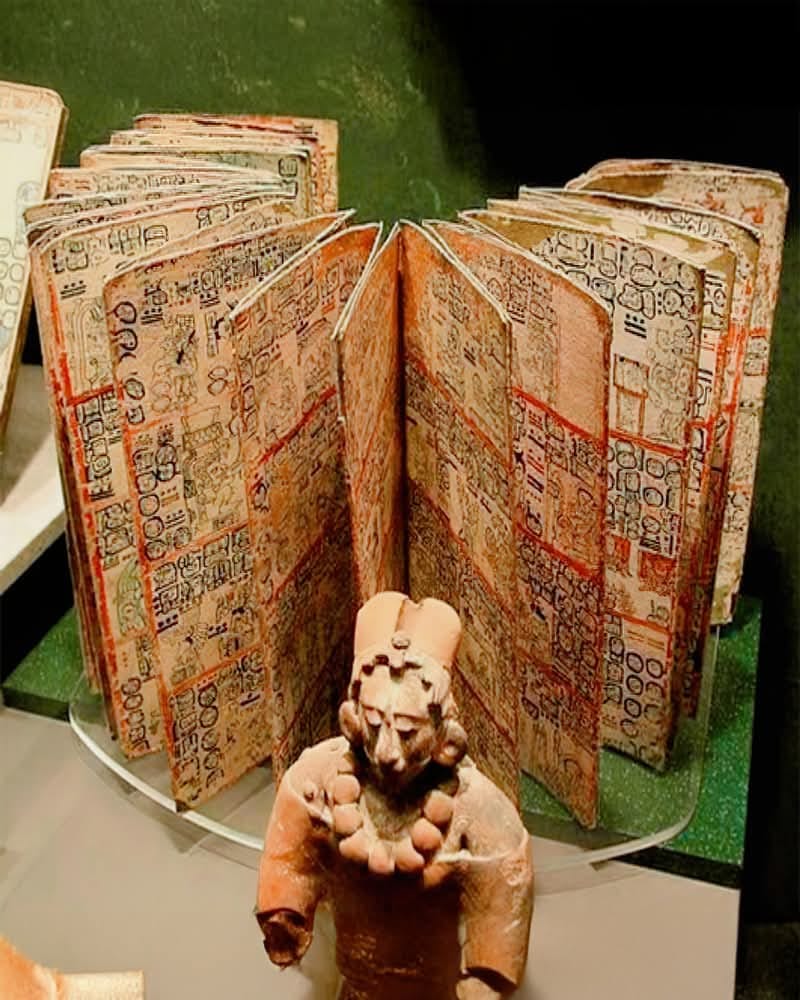The Dresden Codex stands as one of the most awe-inspiring artifacts of the ancient world, offering profound insights into the advanced civilization of the Maya. Dating back to the 11th or 12th century CE, this extraordinary document is a window into a world where science, art, and spirituality were intricately woven together. Crafted with meticulous precision on bark paper, the codex, consisting of 39 folded pages, is not merely a collection of writings but a testament to the Maya’s sophisticated understanding of the universe and their place within it.
A Masterpiece of Ancient Knowledge
The Dresden Codex is far more than just a physical object; it is a masterpiece of knowledge and artistic achievement. The Maya were renowned for their complex systems of writing, and the codex is a prime example of their intricate hieroglyphics. These hieroglyphs, combined with vivid illustrations, create a document that is visually captivating and intellectually challenging. Every page is a reflection of the Maya’s rich culture and intellectual prowess, where each symbol and drawing carries deep significance.

Astronomical Wonders
At the heart of the codex lies the Maya’s extraordinary knowledge of the cosmos. The codex features detailed astronomical charts, some of which predict solar and lunar eclipses with remarkable accuracy. The Maya’s interest in the heavens was not purely scientific; their observations were intertwined with religious beliefs. The movements of Venus, for example, were of immense importance to them, serving as a guide for agricultural cycles and ritual practices. The codex’s predictions of these celestial events reveal a civilization that was not only keenly aware of the sky but was also able to translate this knowledge into practical and spiritual terms.
Science and Spirituality: The Mayan Connection
What makes the Dresden Codex truly unique is how it bridges the gap between science and spirituality. The Maya believed that the cosmos and earthly existence were intricately connected. Their advanced understanding of astronomy was not divorced from their religious beliefs but was, in fact, central to their spiritual worldview. The codex offers a glimpse into the ceremonial practices that were informed by celestial phenomena. Rituals, deities, and mythological narratives are depicted alongside the astronomical data, showcasing a worldview where the heavens directly influenced human activity.

Cultural and Religious Significance
In addition to its astronomical significance, the Dresden Codex offers profound insights into Mayan culture and religion. It provides a glimpse into the Mayan calendar systems, which were used not only for tracking time but also for divining omens and determining the right time for ceremonies. The codex also records mythological stories that were essential to the Mayan worldview. These stories, passed down through generations, were used to explain the origins of the world and the cyclical nature of life. Through these narratives, the Maya maintained a sense of connection to their ancestors and the divine, reinforcing the sacredness of their daily life.
The Legacy of the Dresden Codex
Today, the Dresden Codex is housed in the Saxon State and University Library in Dresden, Germany, where it continues to be studied and admired. Its survival is nothing short of miraculous, as many other Mayan codices were lost during the Spanish conquest. The Dresden Codex remains one of only four surviving pre-Columbian Mayan codices, making it an invaluable source for understanding the Maya’s scientific, artistic, and religious achievements.
The codex challenges our perceptions of ancient civilizations, demonstrating that the Maya were far more than just an ancient people; they were a society that made sophisticated advancements in science, art, and spirituality that continue to inspire wonder today.

Conclusion
The Dresden Codex is a testament to the genius of the Maya civilization. Through its intricate depictions of astronomy, religion, and culture, it offers us a rare and precious glimpse into a world where science and spirituality were deeply intertwined. As one of the few remaining Mayan codices, it serves as both a historical artifact and a living reminder of the Maya’s intellectual legacy, revealing a civilization that was centuries ahead of its time in understanding the natural world and its cosmic connections.

